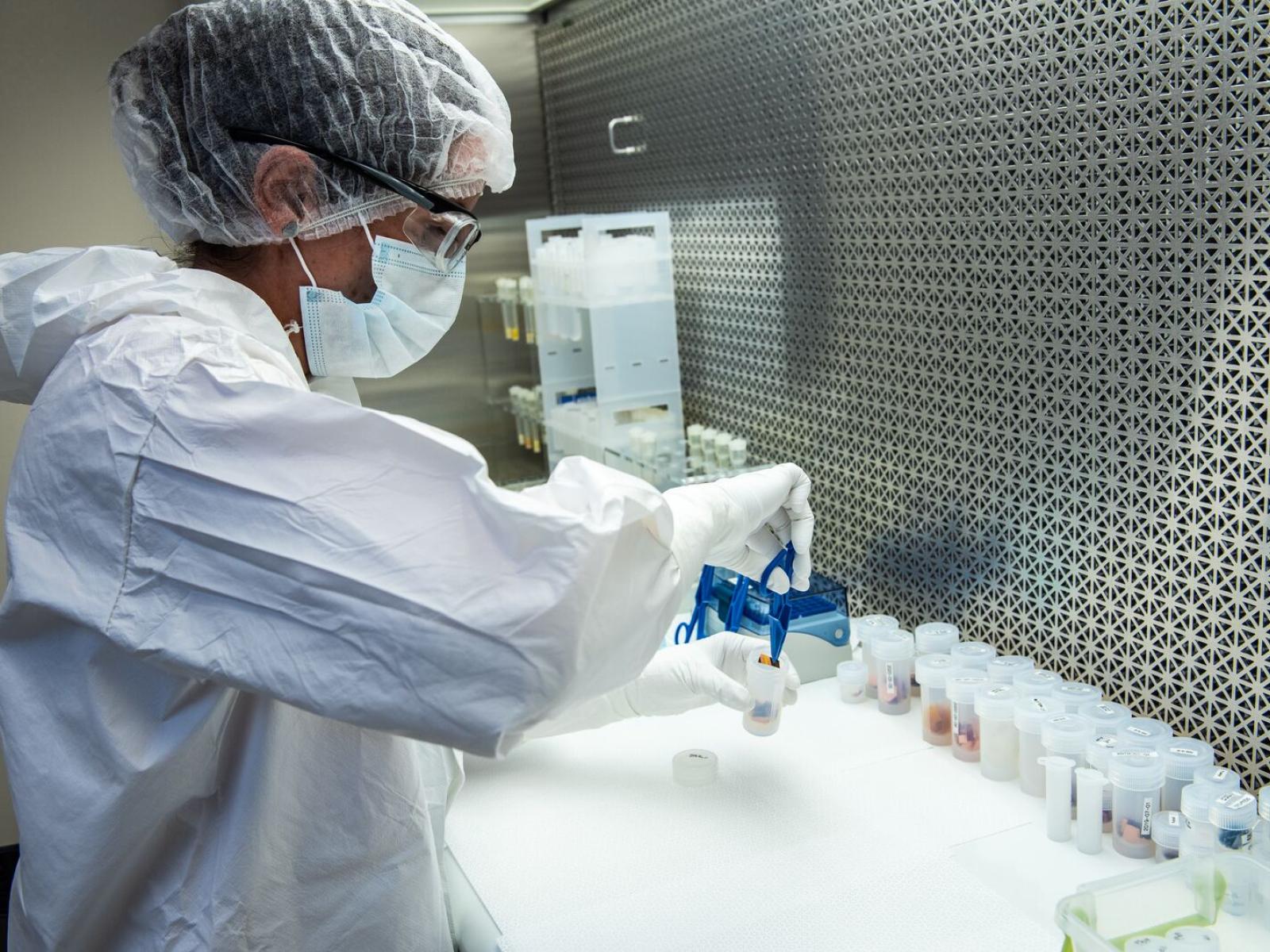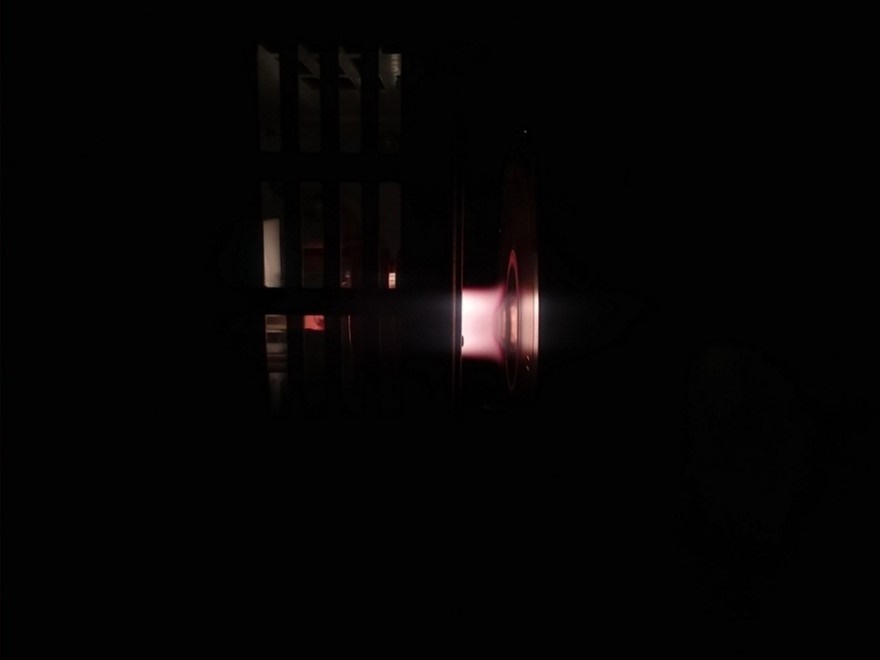PNNL Partnership Produces Purest-Ever Tungsten
Material could replace lead shielding and other materials in physics detectors

A collaboration between Pacific Northwest National Laboratory and Ultramet has led to confirmed production of ultra-pure tungsten metal.
(Photo by Andrea Starr | Pacific Northwest National Laboratory)
In the search for knowledge about the nature of the universe, physicists are looking for data about rare events. These signals are extremely infrequent and can be drowned out by the level of background radioactivity in normal materials. Imagine trying to hear a pin drop. While it might be impossible at a stadium concert, changing the environment to a silent meditation class could help.
Researchers have found radioactively quiet environments deep underground, but the materials in their instruments are still too loud. Specialized detectors made of ultra-pure materials can turn the noise down, it is extremely challenging to produce and analyze these materials.
A partnership between Pacific Northwest National Laboratory (PNNL) and Ultramet through the Department of Energy’s Small Business Innovation Research program has led to the PNNL-confirmed production of the purest known tungsten metal by Ultramet. Tungsten is both strong and dense, making it highly suitable for building complex instruments and shielding against external radiation. Despite these promising properties, conventional tungsten production techniques lead to contamination from traces of naturally occurring radioactive elements. These trace contaminants make the background radiation too high for conventionally produced tungsten to be used in sensitive detectors. Ultramet has the expertise to produce ultra-pure tungsten and PNNL has the expertise to measure the residual impurities, creating a key partnership to address these opportunities and challenges.
“This collaboration has been essential to demonstrating that we’re actually producing ultra-pure tungsten,” said Art Fortini, the project lead at Ultramet.

Ultramet researchers developed a process to make ultra-pure tungsten using chemical vapor deposition (CVD). Their team performed calculations to predict the potential purity of the CVD tungsten and produced demonstration samples, but experimentally measuring the material required partnering with PNNL. The PNNL team used their expertise in developing analytical methods and working in low-background environments to analyze the CVD tungsten. They had to contend with overlapping interfering signals, extremely low concentrations, and potential contaminants in the analytical process.
The PNNL team developed a method that selectively separated the important impurities not once, but twice. The final process can detect the elements of interest in the parts-per-quadrillion range, about six orders of magnitude better than a standard analysis. The contaminants of concern in the CVD tungsten were verified to be down in the tens of parts-per-quadrillion range.
“Getting reliable analysis with this sensitivity requires considering every tiny detail,” said physicist Maria Laura di Vacri, the PNNL lead of the project. “Our previous work making ultra-pure copper helped guide this tungsten work.”
With the purity of the CVD tungsten verified, the Ultramet-PNNL team is excited for others to begin working with the material. One major potential application—replacing lead as a radiation shield. CVD tungsten is about 70 percent denser than lead and several orders of magnitude purer.
“We’re just at the beginning of learning how ultra-pure CVD tungsten can be leveraged in low-background studies,” said di Vacri. “The possibilities span from fabricating ultra-sensitive detectors that will shed light on unanswered fundamental questions about our universe, such as understanding the nature of dark matter and neutrinos, to advancing quantum information science, which requires chemically and isotopically pure materials.”
In recent decades, scientists from all over the world have developed ultra-sensitive detectors to address these challenges. Continued research increasingly demands more sensitive detectors and purer materials. Combining the fundamental material development from Ultramet and PNNL’s ultra-sensitive analytical chemistry expertise is leading to advances in ultra-sensitive detector production and more.
In addition to di Vacri, the PNNL team includes Tyler Schlieder, Isaac Arnquist, Kirby Hobbs, Kenny Horkley, and Eric Hoppe. This material is based upon work supported by the Department of Energy, Office of Science, High Energy Physics program under award no. DE-SC0022788 via the Small Business Innovation Research program.
Published: June 2, 2025